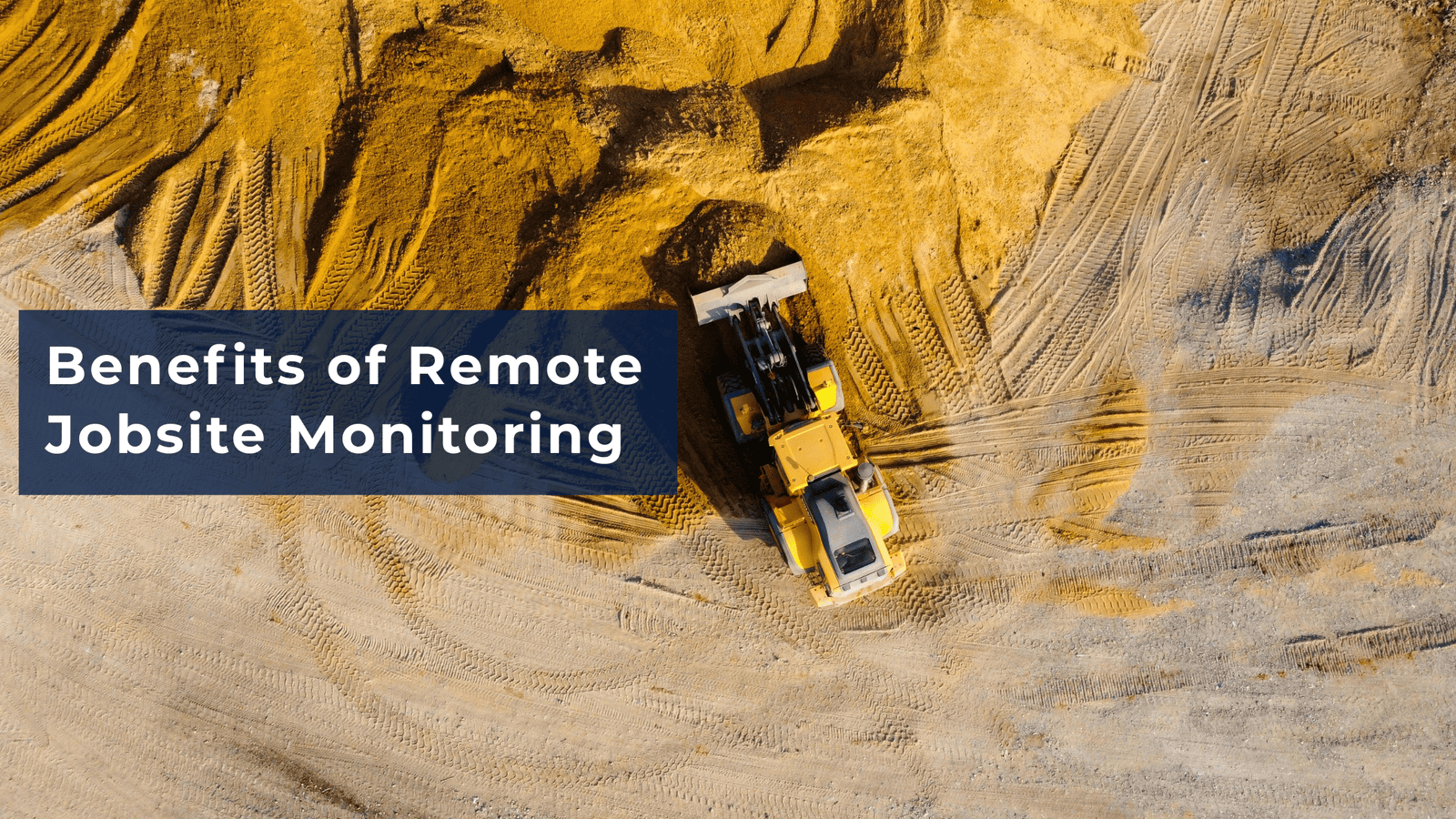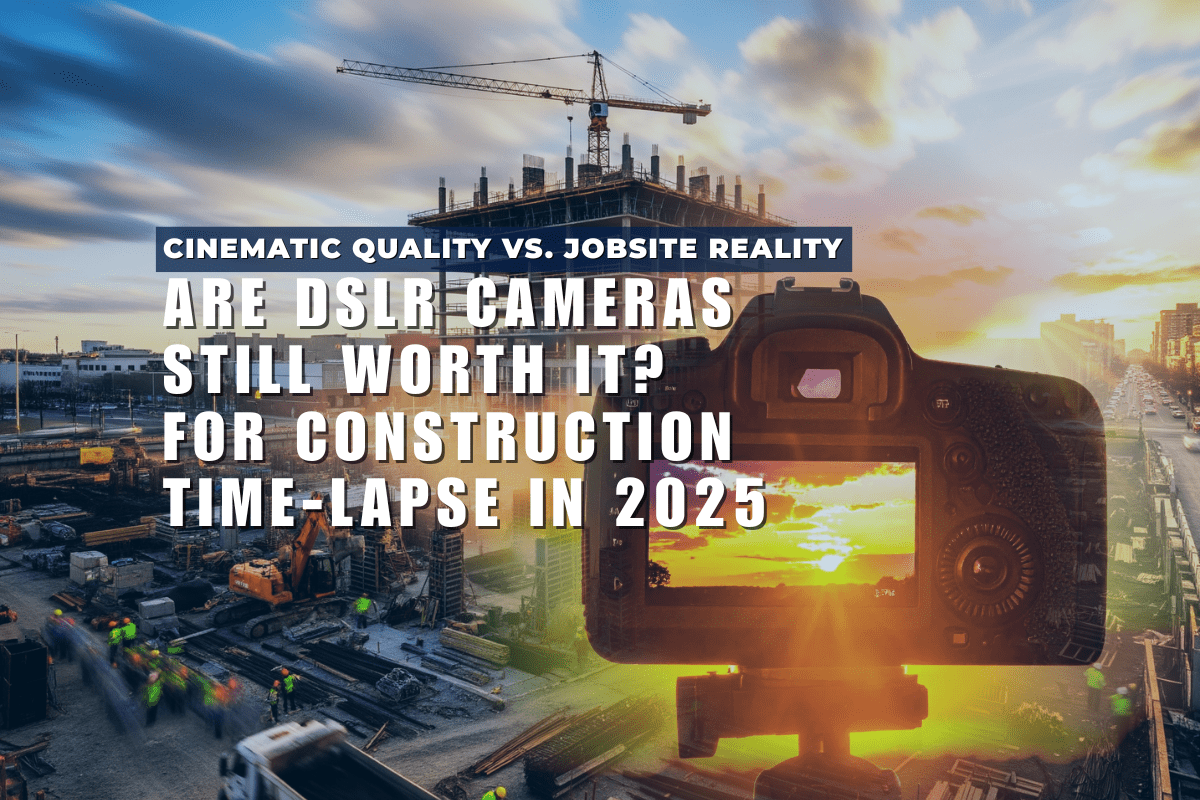Keeping close eye on your construction jobsite can help you increase productivity and efficiency while simultaneously cutting costs. That’s something that just about any construction manager wants to hear.
There are a number of reasons remotely monitoring your jobsite is beneficial: cost cutting, theft prevention, project efficiency increase, bottleneck identification, collaboration, quickly addressing costly maintenance needs, and increasing jobsite safety... to name a few.
What is remote monitoring?
In the construction industry, remote monitoring means using tools like software platforms, cameras, sensors, and other technology to manage, track progress, plan, adjust, and streamline processes from anywhere in the world.
There’s a wide swath of different technologies that can be implemented to assist with this; it really depends on the needs of a particular job site.
- Cameras
- Auditory intercom systems
- Alarm systems
- Field reporting apps
- GPS tracking systems
- Data analysis software
Here at CamDo, in addition to the time lapse capabilities that we’re known for, we also offer cost-effective remote monitoring capabilities through UpBlink.

Do you really need it? The short answer is: yes. While it’s certainly an upfront investment, but you’ll likely spend much more implementing monitoring technology than you will on lost equipment, decreased productivity, or site damaged.
We dive deeper into a few ways that remote jobsite monitoring is beneficial to your project and your bottom line:
1. Prevent Theft
Theft is one reason that customers say that they’re considering remote jobsite monitoring. And this is for good reason. The numbers back this concern.
It’s estimated that between $300 million and $1 billion worth of construction equipment is stolen each year, and this number doesn’t include small tools and building materials.
Construction sites are an easy target, and thieves know this. Most sites do not have 24-hour security, leaving the site and equipment vulnerable for large periods of time. Plus, construction machinery is not registered through a national database, making it easy to sell and nearly impossible to recover the stolen equipment.
Loaders are the most common piece of equipment stolen at 36%, according to a study conducted by the LoJack Corporation. And with less than 25% of stolen construction equipment is ever recovered, deterring the theft from happening in the first place seems to make a lot of sense. With cameras visible, thieves are less likely to attempt to take equipment for fear of getting caught.
Not only are you out equipment, but there are other secondary areas of impact:
- Expensive delays due to downtime, loss in productivity, and missed deadlines
- The cost of renting substitute equipment
- Time lost on filing police reports and insurance claims
- Higher insurance rates down the road
Stolen equipment is an investment that is no longer working for you.
How can this be avoided?
- Place a GPS system on the main pieces of machinery
- Install onsite security cameras with remote monitoring capability
- Install a remote alarm system on entrance points and specific areas that need further protection

2. Increase Productivity and Collaboration
Travel to-and-from your construction site has a cost to it. Not just in the form of money, but it’s also valuable time being spent behind the wheel instead of doing something more productive using your expertise to move the needle on your project. With the ability to access your camera any time, from any location, on any Internet-enabled device, there’s no need to make the trip to check on your site as frequently.
Additionally, you’re able to share your footage across many stakeholders. This allows for better, easier, more frequent communication and collaboration across parties (without having to arrange a laborious on-site meeting), promoting transparency and trust.
3. Increase Jobsite Safety
As if deterring theft isn’t enough, remote jobsite monitoring via cameras can also help prevent workplace injuries and improve overall safety conditions by providing a real-time look at the safety precautions being taken on the jobsite.
It’s no secret that construction sites often present hazardous working conditions. While the industry accounts for only 4% of employment in the U.S., it accounts for a staggering 21% of all fatal work injuries. Meanwhile, nonfatal injuries in the construction sector top over 70,000. Nearly every construction worker will suffer at least one work-related industry.
Protecting your employees should be a priority.
But, aside from the obvious fact that you don’t want your team members seriously injured, these types of events can also be costly to a project. Not only do they cause a loss in productivity, but there are also the issues of worker’s compensation or even possibly expensive lawsuits to consider.
Onsite cameras can be very effective. First, employees are likely to take greater precautions under surveillance, and you may be able to communicate in real time if you notice a hazard or issue by integration with computer vision platforms like SmartVid.io or construction management platforms, like Procore. With a consistent, real time view, you’re also more likely to become aware of and correct workplace hazards before any incidents occur.
We’ve covered in depth why you should be capturing construction time lapse videos of your projects. And if you’re doing so, we make it easy to remotely monitor your jobsitewhile you’re at it. It’s a win-win!
Have a construction project coming up quickly or that you're planning for? We've got the construction time lapse and remote monitoring solutions you need! Click below to learn how UpBlink and CloudX Pro can help.




